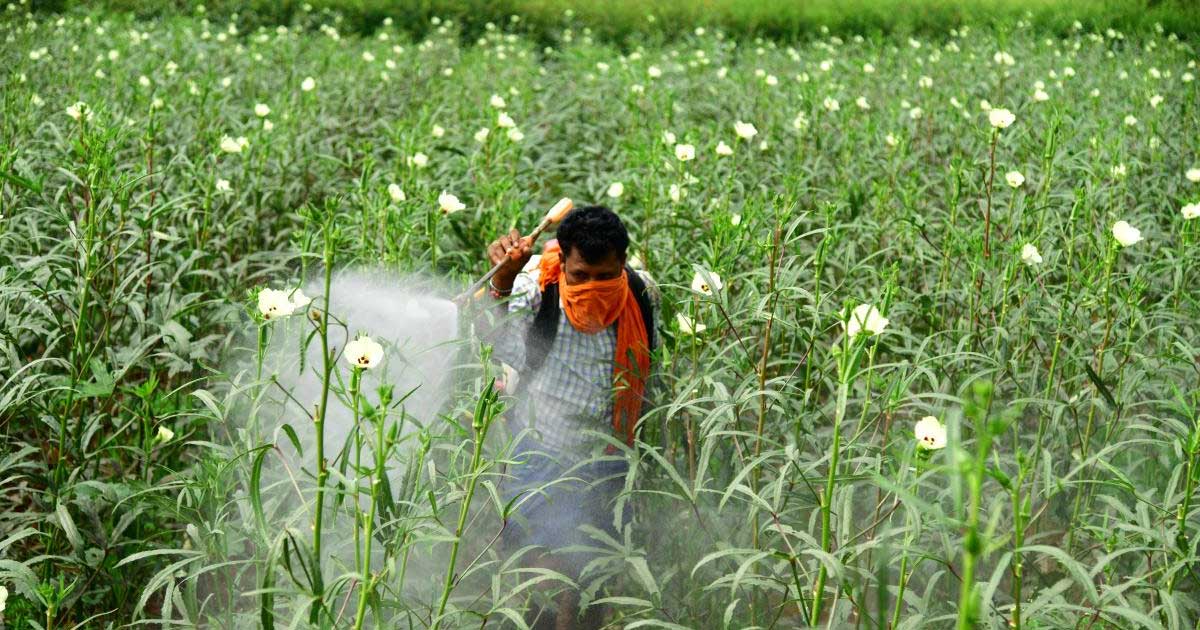FET Blogs


FET Blogs



16 January 2020
The surface of our mother earth is partially covered with approximately 70% of water, a life giving universal solvent referred as ‘Earth’s Blood in India and its fate’ flowing through gullies and tributaries as arteries and veins in a human body. One of the essential objectives of WHO is “It is necessary to save the water sources from the pollutants which contaminate the water making it unfit for drinking”. Nowadays, there is much concern about the current-use of pesticides (CUPs) which is used in farming/agriculture and these pesticides are percolating into the groundwater sources or through runoff and are moving towards different water sources, causing an alarming threat to the humans.
Since legacy pesticides such as DDT began to be regulated in the 1970s and 80s, there has been a massive increase in the use of replacement chemicals that serve similar purposes (i.e., reducing exposure to insect-borne diseases, protecting crops, and maintaining agricultural yields). In theory, these CUPs can be licensed for use if it does not cause harmful persistence in the environment long after the period of its use and if the chemicals have low bioaccumulation potentials. Thus CUPs should have a less environmental impact than the legacy pesticides they are replacing, but the inordinate utilization of synthetic substances utilized in pesticides and insecticides presents a risk to nature, as well as human beings.
Many parts of the world have fallen prey to pesticides and insecticides that have affected a lot of humans, animals and the environment. In India, it was the insecticide Endosulfan which lead to hazardous outcomes. Thus the Supreme Court of India passed a request on May 13, 2011, to prohibit Endosulfan, after a large number of casualties were reported from Kasargod (Kerela). The creation, conveyance, and utilization of Endosulfan were restricted as any contact with humans may lead to fatal consequences. Endosulfan has been utilized to control creepy crawlies which harm vegetables like the potato scarab, bug, cabbageworm, etc. It has also been utilized in nations all through the world to control bugs on organic products, vegetables, tea and other non-nourishment yields for example, tobacco and cotton.
Endosulfan was a commonly used insecticide until its ill effects came to light in the Kasaragod district of Kerala. As a result, it was banned in Kerala in 2005 after the Centre issued a notification, based on the reports of the National Institute of Occupational Health and other committees. But that ban has been ineffective and describing the effects of Endosulfan as ‘DEVASTATING’ the Supreme Court directed the Kerala government to release compensation for over 5000 victims and newborns.
The insecticide was mainly used to get rid of insects in cashew plantations but its vulnerable exposure brought the insecticide in contact with the humans causing severe health hazards for them. Although there is a complete ban on its use, authorities allow its use for some cases such as to take care of bollworm infestation in cotton fields, in the absence of any alternative till today. In such a scenario, it is important to develop strategies to stop excessive use of Endosulfan and other similar harmful pesticides and insecticides in soil and environment preventing its reach to water bodies and ultimately humans.
Due to its abundant usage and potential transport, Endosulfan contamination is still frequently found in the environment. It has been detected in the atmosphere, soils, sediments, surface and rain waters, and foodstuffs. The revelation of new reports for the first time, from researchers in India, have found that mice and rats exposed to this insecticide are suffering from DNA damage, genomic instability, and impaired DNA damage. This puts the welfare of humans in further danger and calls for an immediate solution and alternative to replace these harmful chemicals.
A1: Organophosphates are among the most commonly used pesticides in Indian agriculture.
A2: India’s pesticide industry will see stricter regulations and a shift toward sustainable alternatives.
A3: Pesticide use in India varies by region, with intensive farming areas like Punjab using more.
A4: DDT was among the earliest pesticides widely used in India for agriculture and disease control.
Popular Post
16 January 2026
What is Aerospace Engineering?
16 January 2026
What is Chemical Engineering?
12 January 2026
Best Engineering Courses in India: Top 10 Courses, List, Types & High-Salary Options
07 January 2026
What is Mechanical Engineering?
Ask an Expert for Free